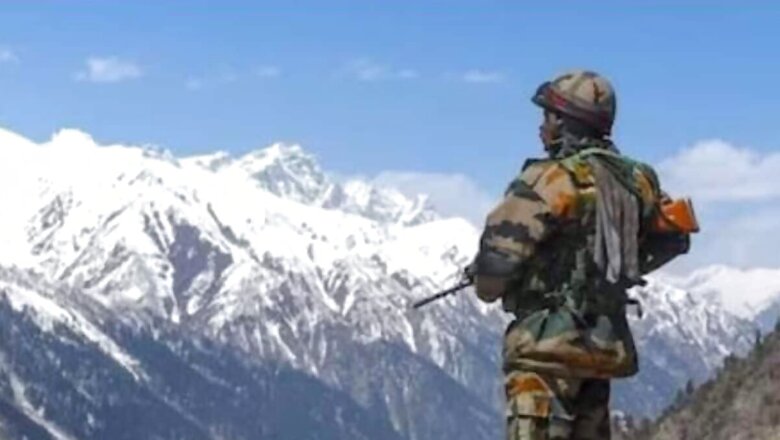
views
June 15 is the fourth anniversary of China’s brazen aggression in Galwan. Since early May 2020, amidst the global Covid-19 pandemic, China has been strategically positioning its military along the Western Sector of the Line of Actual Control (LAC) with India. This escalation in tensions can be traced back to the rise of Xi Jinping to the presidency of China. Beginning with the 2013 Depsang Standoff, Chinese assertiveness has become a recurring theme along the border.
Similar incidents occurred in 2014 and 2015, and again in the eastern sector during the 2017 Doklam Standoff, which resulted in a two-month-long military confrontation between China and India. However, these tensions were ultimately mitigated through diplomatic efforts. In May 2020, tensions flared once more when China objected to an Indian road construction project linking to the Galwan Valley.
This aggressive stance by China resulted in the deaths of 20 Indian soldiers, including Colonel Santosh Babu of the Bihar Regiment. On the other hand, while China claims to have suffered four casualties, multiple international reports suggest substantial losses to the tune of 40 fatalities suffered by the PLA during the clash. The Galwan clash significantly strained India-China relations, casting doubt on China’s purportedly ‘peaceful rise’ and raising concerns about its intentions due to its unilateral attempts to alter the status quo by force. Presently, India-China relations stand at a critical juncture. With China violating numerous international agreements it is in the interest of India to call for significant diplomatic re-evaluation.
Major Areas of Contention
While China has constructed extensive infrastructure in Tibet along the Line of Actual Control (LAC), including border roads and villages, bolstered by a significant presence of the Chinese People’s Liberation Army, India has undertaken similar infrastructure development projects within its territory along the border. Among these developments, the Darbuk-Shyok-DBO Road stands out as particularly crucial.
This strategic route, close to the LAC, links the border areas directly to Leh, the capital of Ladakh, cutting travel time from two days to merely six hours. Notably, areas in and around the Galwan Valley had begun witnessing heightened Chinese belligerence since 2013 which ultimately led to the Galwan clash.
Results of the Clash
It appears that China’s strategic aims through these confrontations were two-fold: firstly, to foster a hyper-nationalist sentiment domestically and internationally, thereby diverting attention from its mishandling of the coronavirus pandemic. Secondly, to challenge India’s sovereignty and hinder its infrastructure development.
This shift in strategy involved rejecting the longstanding consensus and attempts to enforce the 1959 line in eastern Ladakh, which India has consistently dismissed. China endeavoured to achieve this by establishing a spurious patrolling point, PP-14, in the Galwan area and also made incursions at Kugrang Nullah (PP-15), Gogra-Hot Springs (PP-17), and up to Finger Four on the northern banks of Pangong Tso Lake.
What Changed in Galwan?
India and China share 3,488 km of the Line of Actual Control, stretching from the Union Territory of Ladakh to Arunachal Pradesh. China frequently releases maps that depict Ladakh and Arunachal Pradesh as parts of its territory, despite lacking historical control over these regions.
Post 1962 War the normalisation of relations and border discussions between India and China had commenced after a decade-long hiatus during the 1980s. Since that time, over 50 rounds of border talks have been conducted. The process of normalising relations began in earnest in 1993 when both nations signed the Agreement on Maintenance of Peace and Tranquillity in Border Areas. This agreement, which bans the use of force and advocates for the peaceful resolution of disputes, served as the initial significant confidence-building measure between the two countries.
A subsequent agreement, the Agreement on Confidence Building Measures in the Military Field Along the Line of Actual Control, was signed in 1996. This agreement aimed to prevent unnecessary military build-up to avert potential incidents along the border. In 2002, the Agreement on Cooperation in the Field of Border Management was established, setting up multiple communication mechanisms, including periodic flag meetings between military officers of both countries.
These agreements and diplomatic efforts proved futile when China engaged in hostilities against Indian troops at Galwan in 2020. In this confrontation, China breached three established international legal norms viz, Unilateral Attempts to Change the Status Quo, Use of Force and Failure to Communicate.
Post the clashes, India outrightly acknowledged the loss of its 20 soldiers, However, China initially denied any casualties but later conceded the deaths of four of its soldiers. However, the Australian news outlet, The Klaxon, reported that 42 PLA soldiers perished in the clash, a figure significantly higher than what China disclosed to the international community.
Conclusion
The Galwan aggression has instigated a period of uncertainty in the relationship between the two nuclear-armed nations. Despite this, China did not accomplish the strategic objectives it had envisaged through the attacks. The Galwan clash will endure as a stark reminder for China that the unwarranted use of force not only damages international relations but also irreparably undermines China’s claim to being a responsible global power.
The writer is an author and columnist and has written several books. His X handle is @ArunAnandLive. Views expressed in the above piece are personal and solely that of the author. They do not necessarily reflect News18’s views.

















Comments
0 comment